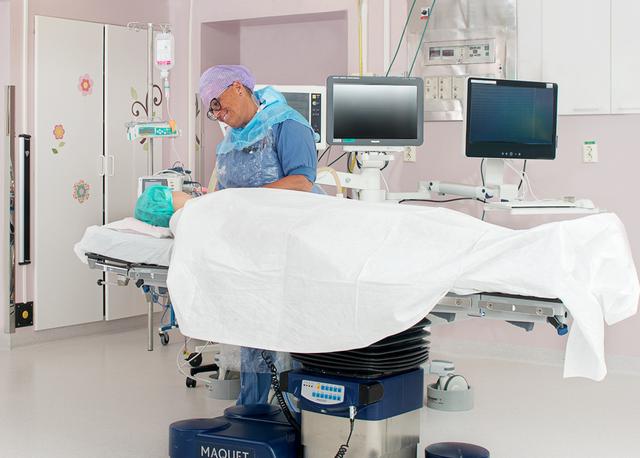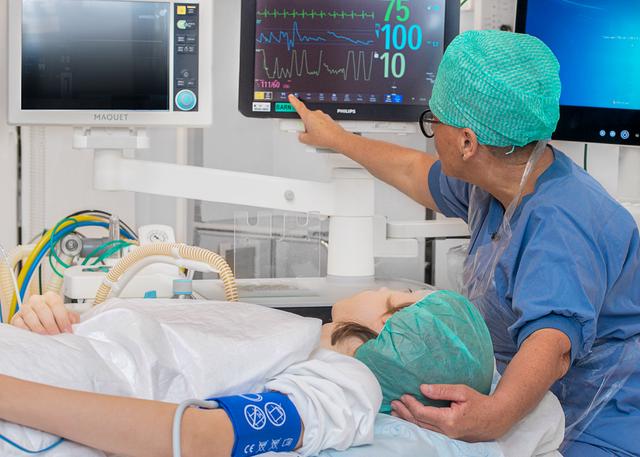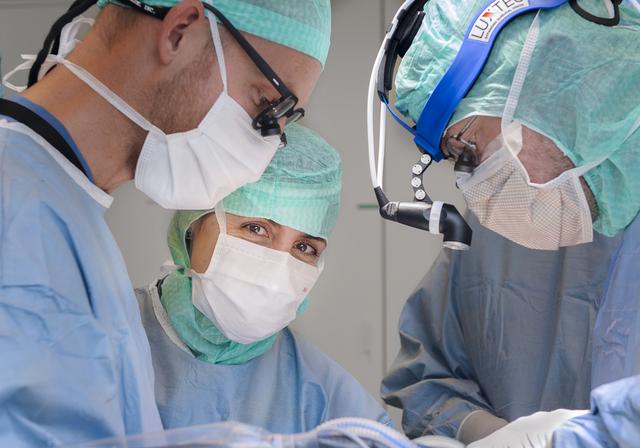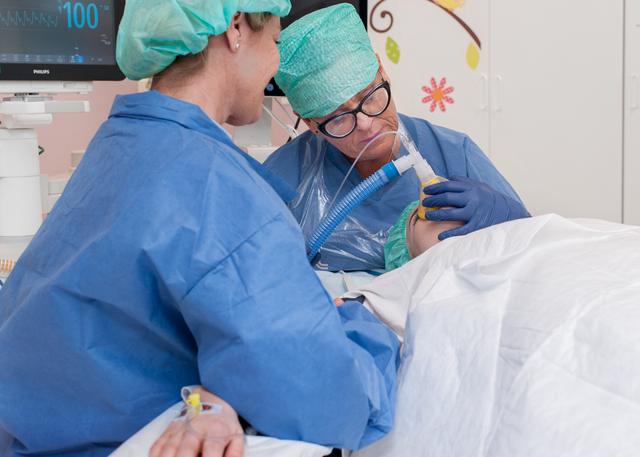Time for Anaesthesia and Surgery
In the operating room, you’ll be asked to lie on a bed that people often refer to as an operating table, strangely enough. The operating table is fairly narrow and not as comfortable as your bed, but you’ll be asleep soon so you won’t need to give it any more thought.

Monitors
The anaesthetist will start by connecting you to monitors of various kinds. Among other things, you’ll have electrodes stuck to your chest – these look like little stickers. These electrodes record the activity of your heart. It’s also important to keep track of your blood pressure – the force your heart uses to pump the blood around your body – so a blood pressure cuff will be placed around your upper arm. You’ll also have a little clip attached to your finger – this will show how much oxygen there is in your blood. All of these things are designed to make sure that you’re properly under and safe. Before they put you to sleep, you’ll be asked to inhale oxygen in order to boost the oxygen level in your lungs.

Who is With Me During the Operation?
There’ll be several different people in the operating theatre. They all have different parts to play, they’re all trained and they’re all good at different things. The anaesthetist or nurse anaesthetist checks that your heart and lungs are working as they should and that you’re properly asleep and won’t feel anything during your operation.They’ll keep a close eye on you and your vital signs every second you’re under anaesthetic, and they’ll be able to tell if anything has to be adjusted. They’ll sit with you the whole time, from the time your eyelids start to flicker until your operation is over. Some people find it unpleasant to have lots of things stuck over their bodies, and the thought of going to sleep when there are loads of other people around you isn’t all that nice, either. But remember – they’re all there for you, and they’re there to do their jobs.

Time to Sleep
It’s important for you to be asleep during your operation, of course, but it’s also important to make sure you’re not in any pain. That’s why you’ll be given both pain relief and anaesthetic throughout the entire operation. There are two stages to anaesthesia. You have to go to sleep first – and then you have to stay asleep. Different drugs are used for the different stages, and lots of different things are monitored carefully throughout your anaesthetic. You’ll be asked to inhale anaesthetic through a mask to make you go to sleep, or else it’ll be administered directly into your bloodstream through the tube in your blood vessel. The anaesthetist will decide which method works best for you.

When it’s time for you to go to sleep, it’s a good idea to try to relax and think about something safe (good looking ) and nice! Some people try to fight against the anaesthetic, but you’ll lose every time. Luckily you can’t resist the anaesthetic, regardless of whether you’re inhaling an anaesthetic gas or the anaesthetic is administered into your bloodstream. You’ll go to sleep quickly, and gradually that sleep will get deeper and deeper. Now it’s time for the person who came with you to leave the room and wait outside for you until you see them again in the recovery room.